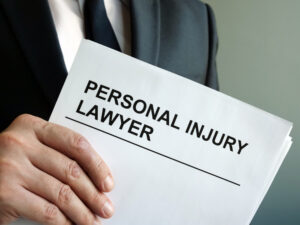Have you ever been to a fitness studio or gone ziplining through the jungle in Costa Rica? Okay, maybe not that last one. But, chances are at some point in your life you’ve visited a gym, a yoga studio, or partook in some sport or activity before which you had to sign a liability waiver. And you probably didn’t even read through the fine print before blindly agreeing to whatever it is it says. It’s not like you’re not going to sign it- because then you can’t strap on a parachute and jump out of a perfectly functioning plane, ride up in the hot air balloon, or do any of the cooler, more thrilling things in life. If you’re in the camp of “non-readers”, we pass no judgment. But we might recommend giving a slightly more cursory glance before you sign something next time. You may find something in there you really don’t agree with or that may make you take pause and reconsider doing the thing you’re about to do.
What is ‘Assumption of Risk’
Next to contributory negligence, the assumption of risk is the most commonly raised defense in a Maryland Personal Injury case. It is typically used by a defendant being sued by someone after they’ve been injured. The assumption of risk defense argues that the injured party knew they were acting in a way that could lead to injury and, as a result, are prevented from recovering from who they believe to be the responsible party. With this defense, the plaintiff (the person who was injured) is deemed to have accepted the risk that they could be injured.
Assumption of risk has three critical elements; the absence of any one of these three things may lead to a shaky defense.
- The injured party (aka: the Plaintiff) had knowledge of the risk of danger (like maybe jumping out of a plane isn’t the safest thing…maybe?);
- The injured party appreciated that risk (can one truly appreciate the risk of one’s parachute failing to open after jumping out of the aforementioned plane?);
- The injured party voluntarily met the risk of danger (unless they were pushed…)
Put simply: if you knowingly and voluntarily put yourself at risk of injury, then you could be prevented from seeking damages from the person you deem responsible for your injury.
How does it work?
In many cases, this defense is airtight, especially in cases where a liability waiver or assumption of risk form has been signed by the plaintiff (see why we said you should read those things before signing them?). In order for the assumption of risk defense to work, the plaintiff (the injured party) must have somehow acknowledged the risk or made an informed decision knowing there was a looming risk. In fitness studios and any sort of thrilling attraction (ziplining, skydiving, etc.), you’ll have to sign a waiver before you can start slinging kettlebells or ziplining through jungles. These waivers are you acknowledging that there is risk involved in your activity; you accept it and you want to proceed anyway.
But what about injuries that occur in commonplace locations, like a bank or grocery store, where you don’t sign a waiver prior to completing your list of thrilling errands? Let’s look more specifically at slip-and-fall cases where the assumption of risk is a popular defense.
Say you’re grocery shopping; you’re zig-zagging through the aisles, hither and thither, putting this and that into your cart. And you come to aisle 27: your last stop before checking out. The only thing that stands between you and dominating that grocery list is a jar of sauerkraut. But you notice, about halfway down the aisle, a big yellow sign bearing the warning: “CAUTION! Wet floor!”
Victory is all but yours. Your adrenaline is pumping, your heart is racing. Your knees are weak; your palms are sweaty. You throw caution to the wind and proceed down the aisle. You’re thinking of little else but that jar of sauerkraut. And then it happens…you slip and fall and break your tailbone. You’re hurt, angry, and embarrassed. You’ll see! You’ll have their jobs for this!
Not so fast. Remember that big yellow sign? That was your warning. That was the store covering their rear-ends in case of this exact scenario. The store will argue that you could have avoided aisle 27 and bought your sauerkraut some other time; instead, you voluntarily chose to confront the risk and journeyed down the aisle further. Now, your dreams and tailbone are crushed…and you still don’t have that jar of sauerkraut.
So, what can we do to help?
The assumption of risk law has been challenged by numerous cases in the past, leading to higher courts overturning the lower court’s initial ruling in favor of defendants. Not every case can be won. We must all strive to pay more attention to our surroundings and reconsider how much risk we voluntarily assume in our lives. If you find yourself in a situation where you’ve been hurt, or you felt you were coerced into assuming the risk of bodily harm by another person, give us a call. Similarly, if you find yourself questioning the legitimacy of a waiver you’re being asked to sign, give us a call. The Personal Injury attorneys at Ferrante and Dill, LLC will be happy to assist you with your case. Ferrante, Dill & Hisle partner Nicholas Ferrante works exclusively on the side of people who are injured – helping clients to get compensated for the losses they have incurred as a result of someone else’s negligence. Give him a call or email him today at (410) 535-6100 or info@ferrantedill.com.
Disclaimer!
This blog post that is published by Ferrante & Dill is only available for informational purposes and should not be considered legal advice. By viewing these blog posts, the reader understands there is no attorney-client relationship between the blog publisher and the reader. The blog post should not be used as a substitute for legal advice from a licensed professional attorney, and we recommend readers to consult their own legal counsel on any specific legal questions concerning a specific situation.





